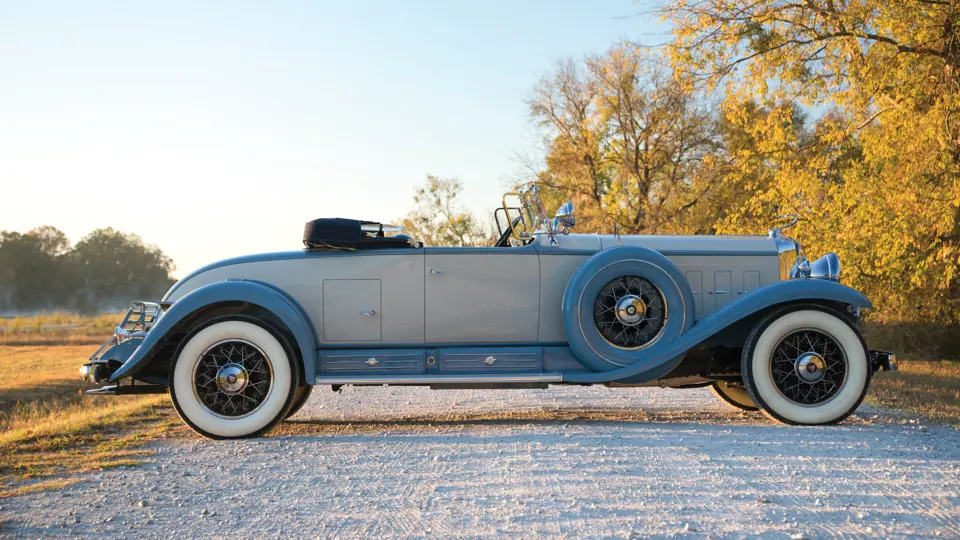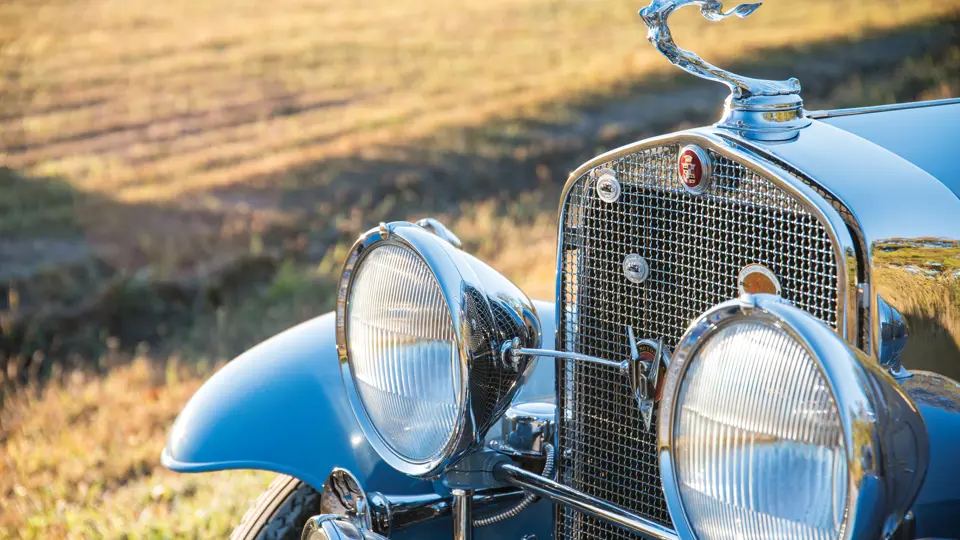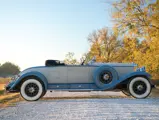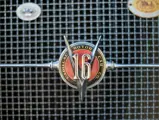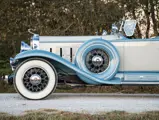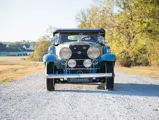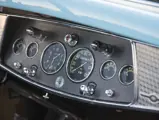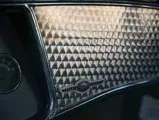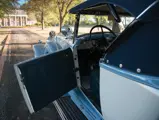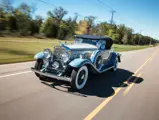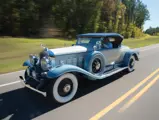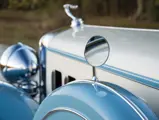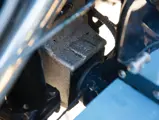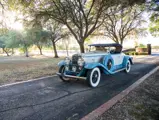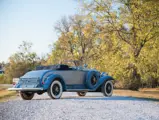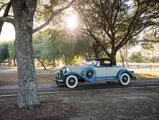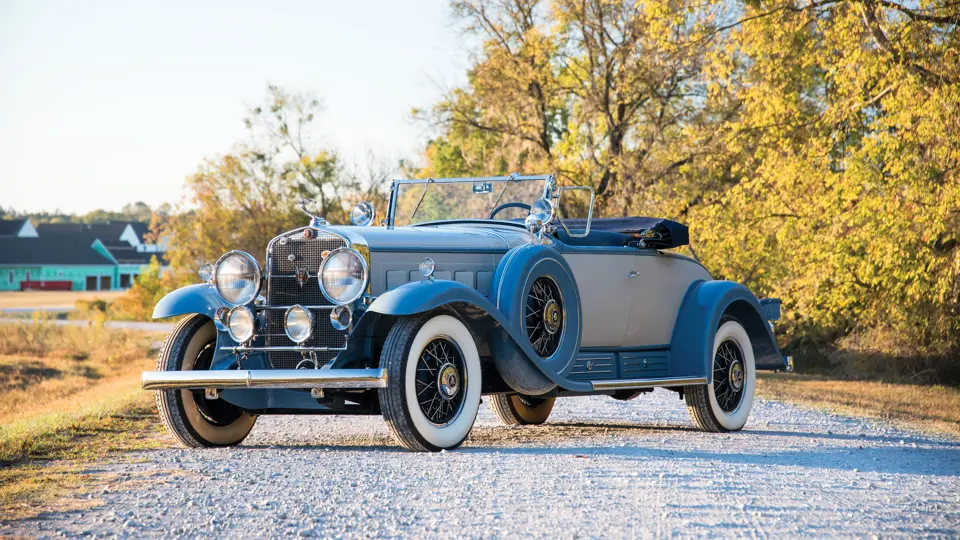
1930 Cadillac V-16 Roadster by Fleetwood
{{lr.item.text}}
$1,100,000 USD | Sold
{{bidding.lot.reserveStatusFormatted}}
- One of the most desirable American Classics
- A genuine example with decades of well-known ownership history
- Pebble Beach Concours d’Elegance Best in Class winner
- 100 points in Classic Car Club of America (CCCA) judging
- A superlative, award-winning V-16 with few peers
Model 452. Body Style 4302. 175 bhp, 452 cu. in. OHV V-16 engine, three-speed selective synchromesh manual transmission, solid front axle with semi-elliptical leaf spring suspension and hydraulic dampers, three-quarter floating rear axle with semi-elliptical leaf spring suspension, and four-wheel vacuum-assisted mechanical drum brakes. Wheelbase: 148 in.
THE CADILLAC SIXTEEN
On 4 January 1930, Cadillac stunned the fine car market at the New York Auto Show with the introduction of its breathtaking new V-16. With it, Cadillac instantly catapulted itself to the head of the luxury class in one brilliant stroke. Until then, only Bugatti had produced a 16-cylinder engine, and it was accomplished by bolting two 8-cylinder inline engines together, which was an innovation that was originally intended for aircraft use.
Cadillac’s V-16 was the first true 16-cylinder engine to be built from scratch, and it was a project that was led by Owen Milton Nacker under conditions of the utmost secrecy. In order to avoid knowledge of the project leaking from lower-level GM engineering departments and parts suppliers, a well-coordinated disinformation campaign was created, which included cover stories and notes on various blueprints that indicated that the project was actually Cadillac’s contribution to a new GM bus project. The 45-degree cylinder bank angle and overhead-valve design kept the V-16 narrow, while its external manifolds allowed easy access to the engine compartment.
Furthermore, Cadillac’s V-16 was the first automotive engine ever to be “styled,” as all of the wiring was hidden and the engine compartment was dressed up with plenty of gleaming, polished aluminum, porcelain, and a pair of beautiful valve covers with brushed aluminum ridged surfaces that featured the Cadillac emblem.
Cadillac managed to survive the rapidly declining luxury-car market of the early 1930s thanks to the financial resources of GM, its massive parent company. Without this support, Cadillac could never have produced such a limited-production, luxurious automobile. Although the V-16 was brilliantly designed, its shrinking Depression-era market meant that the V-16 was, of course, produced in tiny numbers for those few who were capable of paying more than 10 times the cost of a contemporary Chevrolet convertible. Without doubt, the few examples remaining today offer a rare glimpse into one of the most exciting automotive eras of all time.
V-16 NUMBER 702604
According to V-16 historian William Meffert, the roadster offered here is a very good and authentic survivor of the merely 100 produced in this fleet and sporting style, number 4302, on the 1930 and 1931 V-16 chassis. Body number 97, the car is further documented as an original roadster by a copy of its build sheet, which is on file, noting its delivery new through New York State dealer Fred Tremble. Interestingly, the car was originally all-over black, with the body moldings and undercarriage finished in Tokio [sic] Ivory – something that must have been truly a sight to behold!
The roadster’s subsequent history is not known prior to 1961 or 1962, when it was acquired by Neil Austin, a longtime V-16 enthusiast from Florida. Mr. Austin seldom restored, drove, or sold any of the numerous treasures packed into his garage, and while he began work on the roadster, it largely sat, out of sight, until 1988.
That year, the aging Mr. Austin finally elected to sell the car to well-known St. Louis collector Fred Weber, who had pursued it for many years. Mr. Weber commissioned Mark Ohm to perform a restoration of the roadster, after which it was traded to Steve Nannini. Mr. Nannini, in turn, sold the Cadillac to the present owner, a renowned American collector of the finest Full Classics, in whose care it has been maintained ever since.
What began as mechanical work on the car in 1997 turned into a full restoration, completed in time for the 1999 Pebble Beach Concours d’Elegance. Finished in a beautiful, subtle two-tone of soft grey and blue, it was a crowd favorite that day on the Monterey Peninsula and was awarded Best in Class. The owner notes that it was taken to the CCCA Grand Classic in 2001, winning a first prize and scoring 100 points. It was returned to Pebble Beach in 2008, meaning that it will soon be eligible for its next appearance.
The car’s restoration has aged only gently, with minor stretching and cracking to the leather of the front seat; its paintwork and chrome trim are still beautiful and show-quality. Numerous accessories, including a radiator stone guard, Goddess mascot, dual driving lights and cowl lamps, and a driver’s side spotlight, add to the period-correct flair. Authenticity gurus will find peering under the hood especially satisfying, as the engine’s unit number, 7-2804, matches the build sheet, as does the engine number 702604, stamped on the crankcase.
The Cadillac V-16 roadster is one of the most visually and technologically impressive automobiles of its generation and has recently attracted new attention from collectors worldwide as one of the most desirable Full Classics on the market today. The opportunity to acquire such a beautifully restored and correct example as this is rare, indeed.






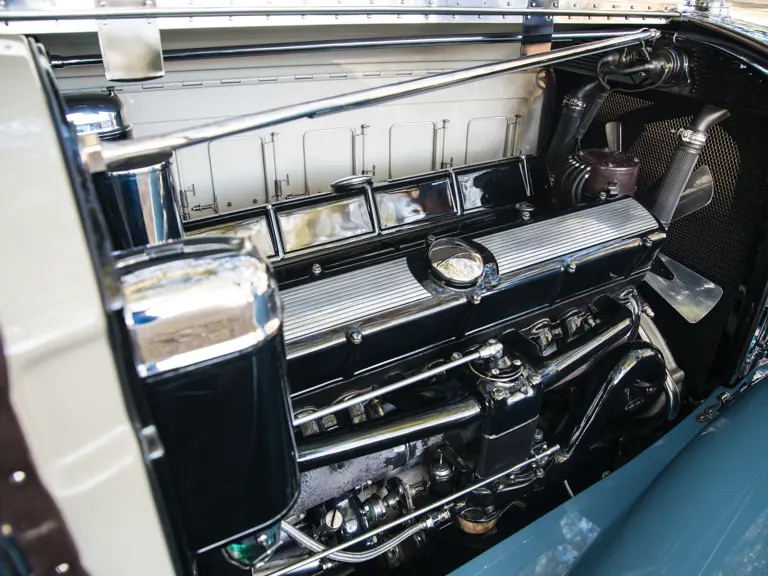

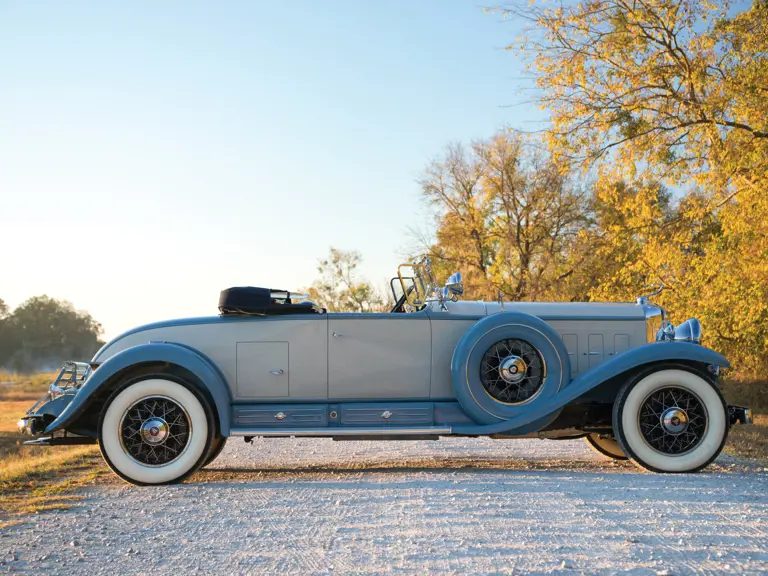
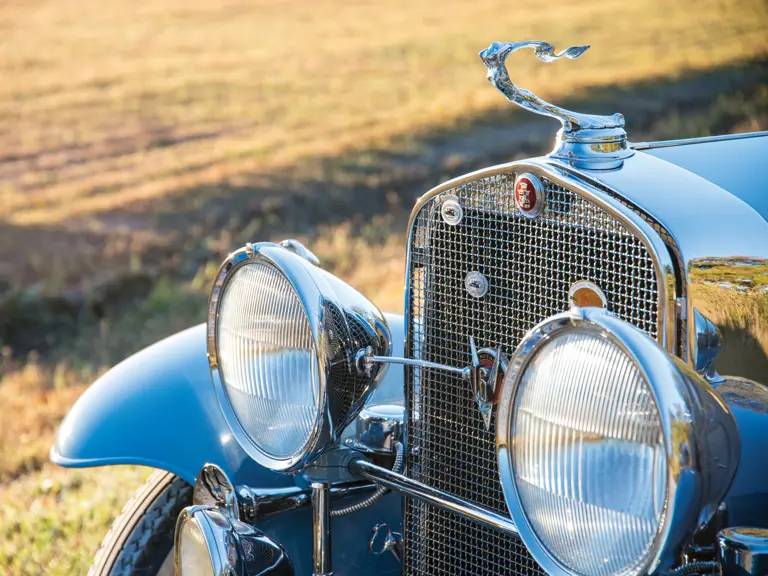
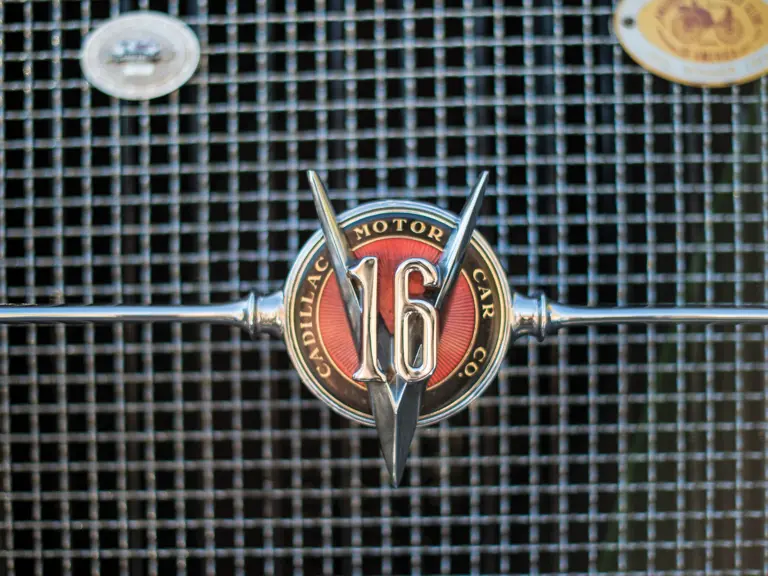
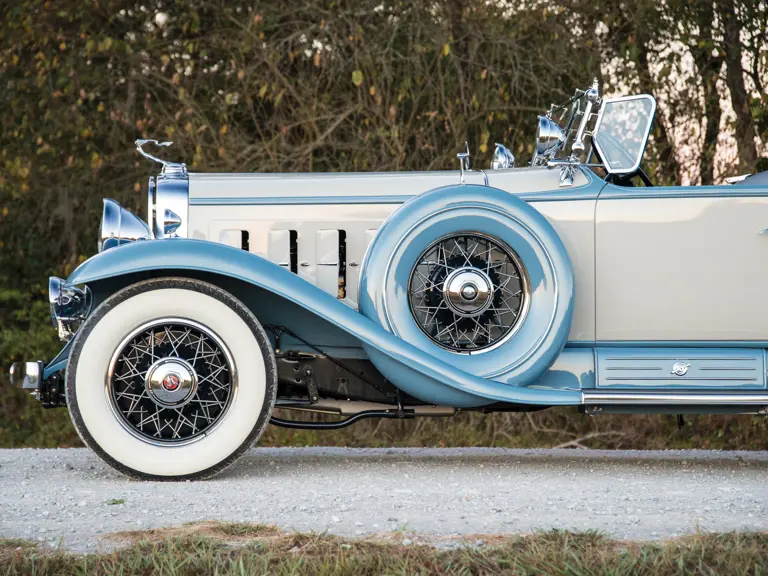
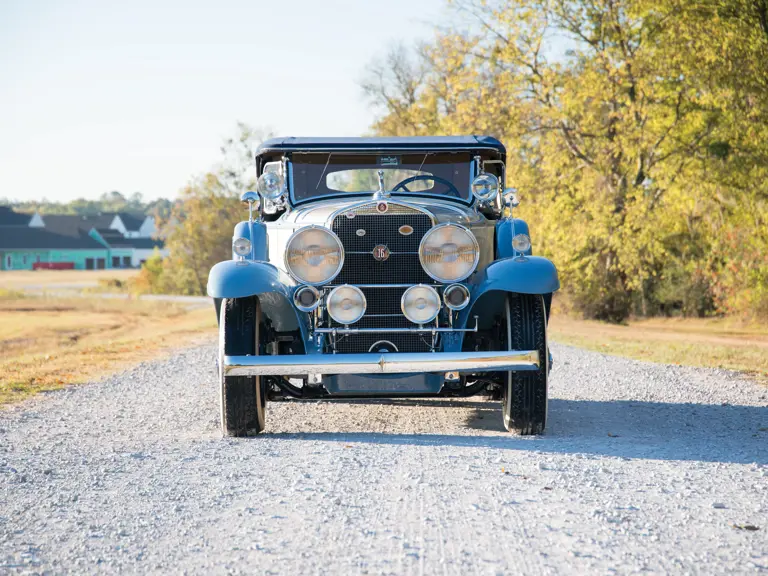

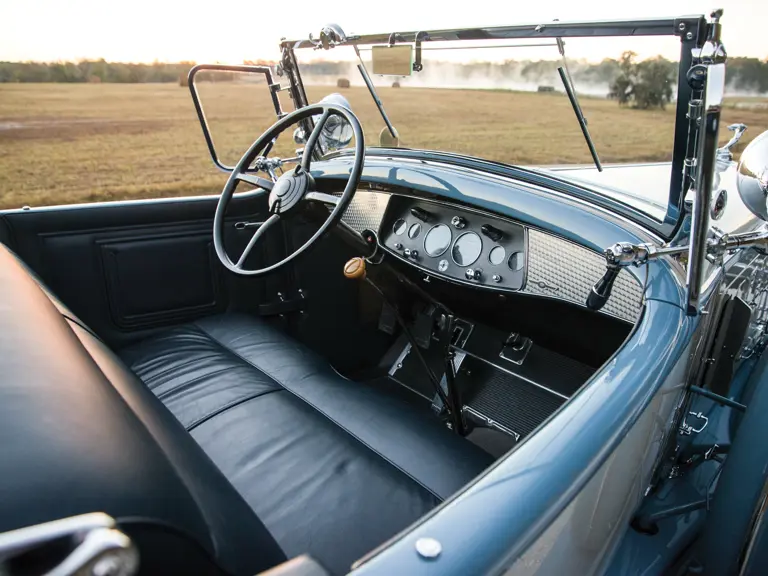
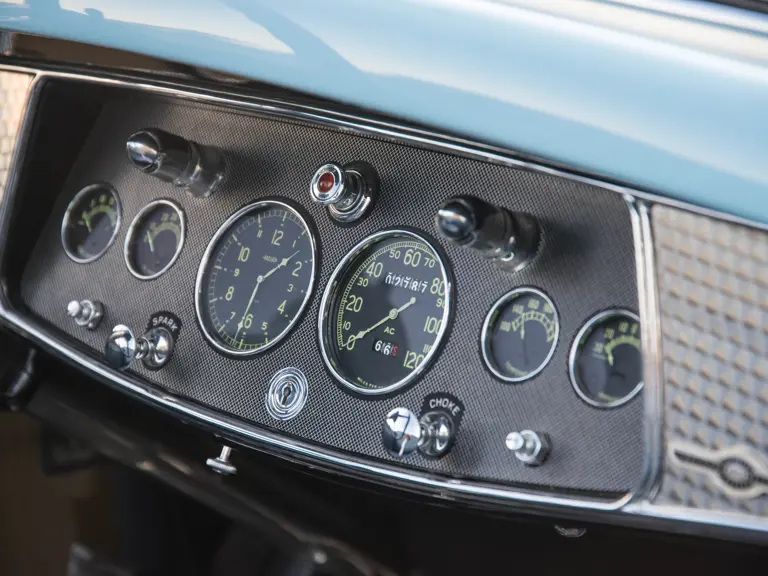
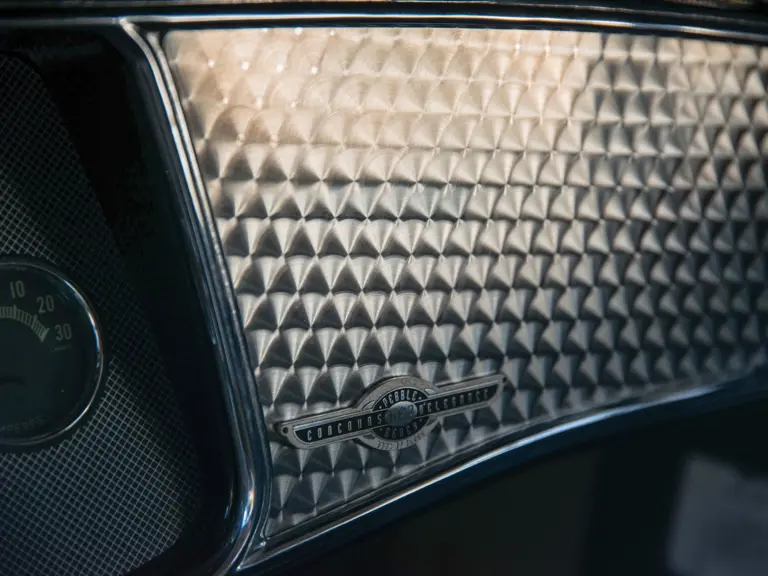
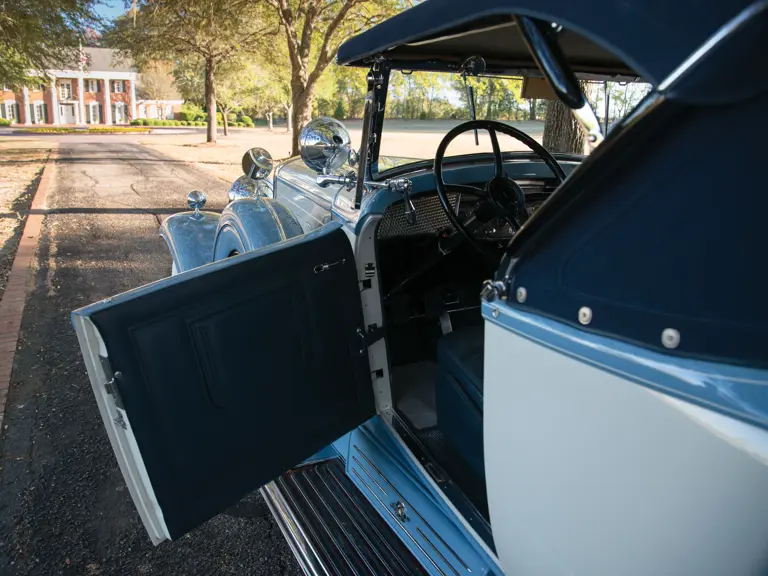

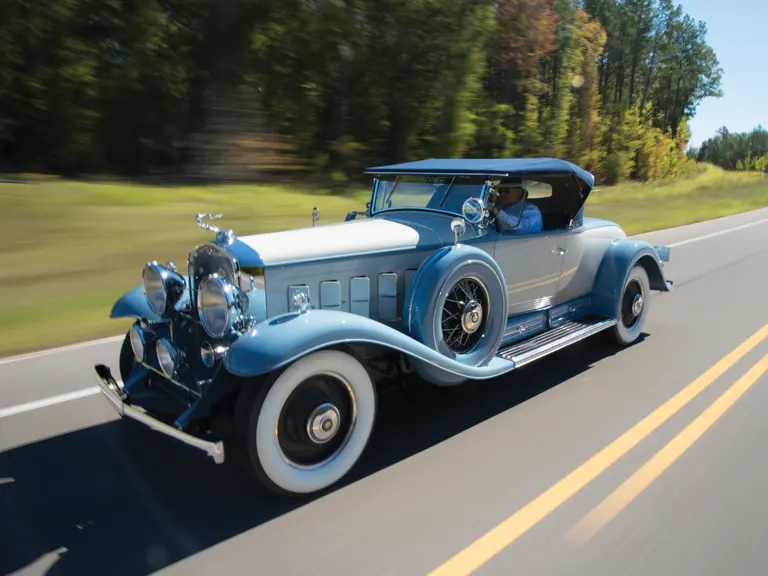
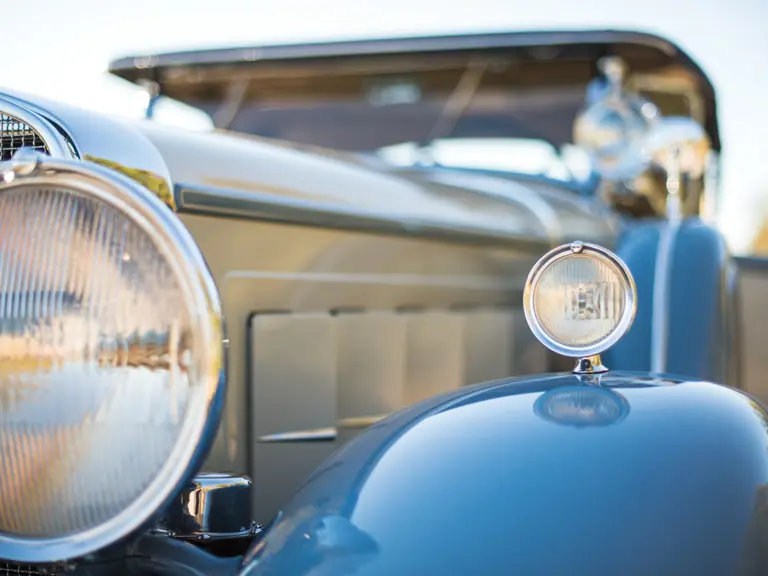


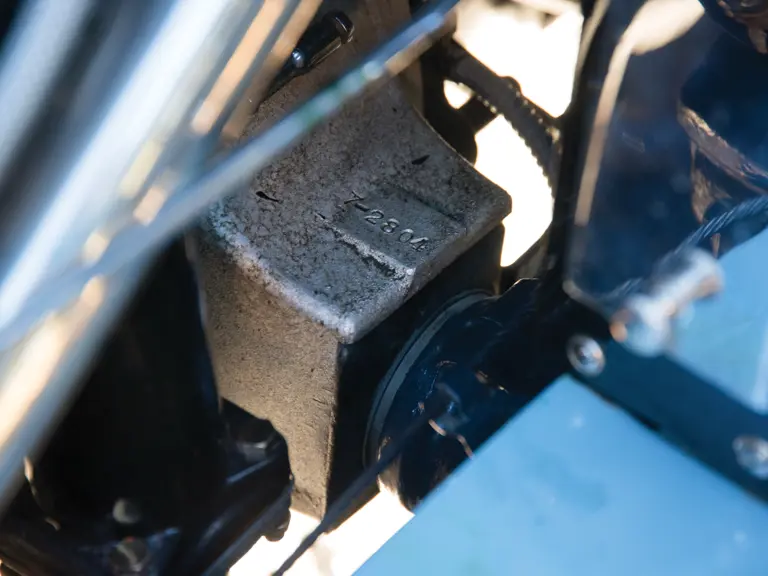
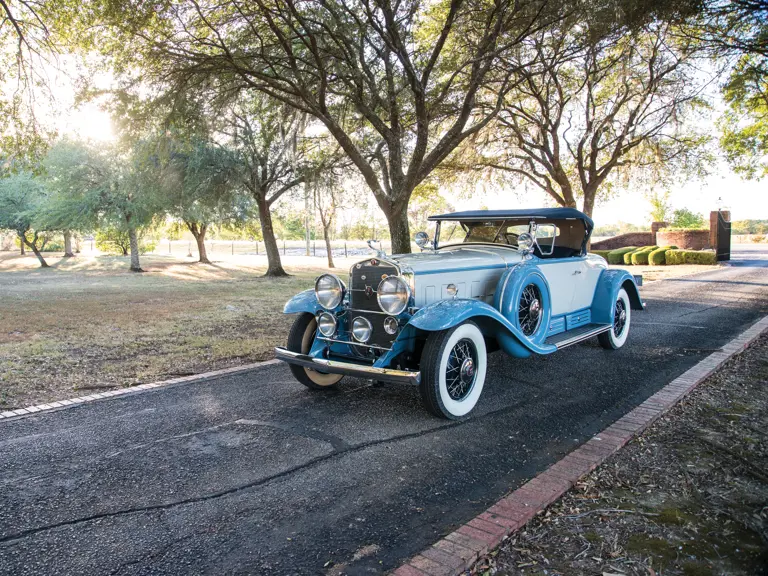

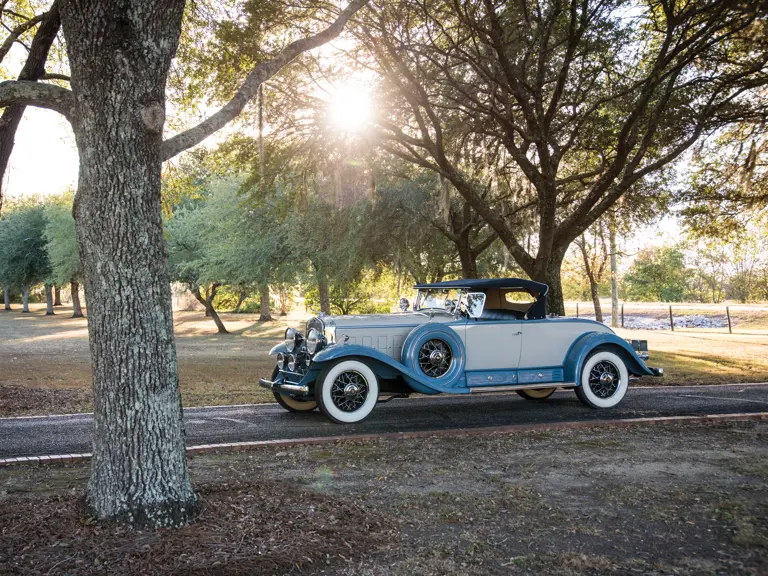
 | Phoenix, Arizona
| Phoenix, Arizona
